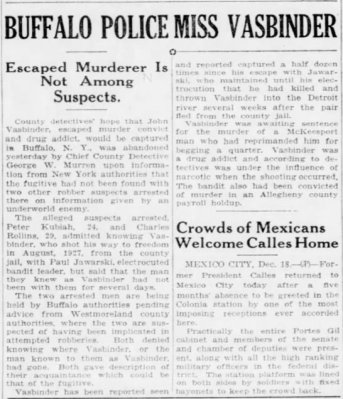“I preached atheism since the day I quit singing the choir. A man is yellow if he spends his life believing in nothing and then comes crawling to the church because he is afraid his death is near.”
-Paul jaworski
Nearly a century ago, Pittsburgh was a city on the rise. By 1911, the city exported a mammoth percentage of the national export on iron and steel. Millions of tons of metal were transported on its advanced railroad system and via ships puffing up and down its three rivers. The city’s industry produced pollution so heavy that the street lamps were lit during the daytime. At the time, this was viewed as a sign of prosperity by locals.
It was a busy and thriving era, and during 1920’s Prohibition, a different kind of trade flourished. Pittsburgh was a nexus for bootlegging and illegal alcohol trade, with a local government whose control came second to that of the city’s ruling crime family. It was a time of turmoil and change, and a new gang was about to roll into town.
The Flathead Gang

Paul Jaworski (1900-1929) was a Polish-American who immigrated with his family to the U.S. in 1905. He, too, had his roaring twenties. Originally living and operating out of the Detroit area, he soon grouped up with like-minded youths, each seeking to make their mark and take what they could from a country in the midst of Prohibition. Becoming too infamous for their own good in Detroit, they hopped on a train for Pennsylvania.
They became known as The Flathead Gang, and Paul became known as “The Pennsylvania Phantom.” They wreaked a crime spree so innovative and historic that Paul was wanted in at least three states for murder and robbery. They targeted payroll delivery drivers, killing at least two. They successfully pulled off the nation’s first armored truck robbery, using a landmine to knock the truck on its top, making off with $104,000 in cash (over half a million in today’s . They were young and violent and short-lived and groundbreaking. They also left behind one enduring local mystery.

A Violent Escape from Pittsburgh
Just two days after the explosive truck heist in 1927 in Bethel Park, Jaworski was apprehended by Pittsburgh area police. He was tried and convicted for the landmine robbery and later convicted of the murder of a payroll guard in Upper St. Clair. He was sentenced to death, and spent time on “Murderer’s Row” in the Allegheny County Jail in downtown Pittsburgh.

It’s here Jaworski became acquainted with John H. Vasbinder, Jr., though he went by Jack Bussinger. A fellow convicted murderer, Bussinger had his own fair share of misadventures throughout the 1920’s. Just 22 years old, Bussinger shot and killed a man on a McKeesport street after the man told him to “get a job.” Two months later, in May 1926, Bussinger was apprehended on an unrelated robbery charge and held in Clarion County Jail. After he tried to escape, McKeesport police were alerted to his whereabouts and were able to charge him with murder. He was tried and convicted of first-degree murder and sentenced to death in 1927.
Bussinger and Jaworski crossed paths on the macabrely-named “Murderer’s Row” in 1927 and, finding each other kindred spirits and both having run out of road, they hatched an escape plan. With the outside assistance of Jaworski’s brother and fellow Flathead, Bussinger and Jaworski were smuggled pistols. They violently busted out of jail, shooting and wounding two guards during the chaos. The trio escaped from the city in August 1827, just a couple months before their executions. A multi-state manhunt promptly ensued.

The Disappearance of Jack Bussinger
The trio evaded police for over a year, when they were reported to be in the vicinity of Cleveland. Police attempted to apprehend the group at a Cleveland restaurant in September 1928, though they didn’t come quietly–one officer, Anthony Wieczorek, was shot and killed, while Jaworski was shot and apprehended. Bussinger escaped the shootout, while Jaworski was driven back to Pittsburgh to resume his incarceration on “Murderer’s Row.”
Before his execution on January 21, 1929, Jaworski told police that he himself had murdered Bussinger. He considered Bussinger a liability due to his ongoing drug addiction, and was afraid that if apprehended, Bussinger would feed police information on Jaworski. Jaworski claimed he had shot and killed Bussinger before dumping his body in the Detroit River.

Pittsburgh police were unable to substantiate this claim. Firstly, police suspected that Bussinger had escaped the Cleveland restaurant shootout. Secondly, his name and description were written up in newspapers throughout the U.S. There were alleged sightings of Bussinger in Buffalo, Cleveland, Texas, and Alabama, though none of these glimpses led to a positive identification.
What made the search so difficult? There were no known photos of Bussinger with which to identify him. A 1962 investigation by Pennsylvania’s Attorney General’s office was unable to positively determine Bussinger’s whereabouts, or even if he had been killed as Jaworski claimed. Jack Bussinger was never seen again.

